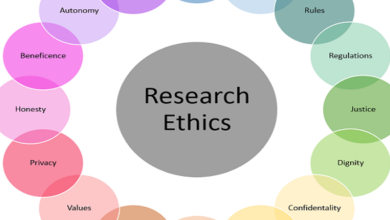Identifying and researching a topic

Developing Ideas for Research Studies: Possible Topics
The first task in developing a research study is coming to some decision about a possible research topic. For some students, this can be an exciting process: finally Being able to pursue a topic that you have been interested in all your life but have never had the time or the opportunity to pursue. (Not that you have a whole lot of time now that you are in graduate school, but at least you can’t say you don’t have the opportunity.)
For other students, coming up with a topic can be a horrible, painful experience: torn between several topics, one more interesting than the next, wanting to explore everything, leaving no stone unturned, and believing that it might be this study (or maybe the one right around the corner) that will somehow ultimately change the world . . . , if you could only wait one more day before having to decide.
Replication
The third approach to doing a study is through what is referred to as replication. Although this approach may sound complicated, in essence, it is a “do over but do better” approach. Typically, a researcher conducts a replication by first selecting a research study that she or he recognizes (or learns through others’ reviews of studies) as flawed; that is, it either uses poor methods to collect the data or sample participants or is poorly designed in other ways that will be discussed later in this book. Some of these issues may be directly related to poor planning and practice by the researcher
Developing a More Focused Research Question
With your research question in hand, you begin the process of further in-depth review of the literature by reading more research on your question. Students often ask: “What am I supposed to be doing while I am reading these studies?”
A common misconception is that students are looking for one study that will completely answer their research question rather than simply exploring the issues and types of research done on their topic. Many students are uncomfortable with the idea of exploring for exploration’s sake, and they have had little experience with this method through their previous school training.
Types of Sources
Whether sources are online or print based, there are many different types of sources that can be used in a review of literature, including the following:
- Articles in professional journals
- Government and technical reports
- Conference proceedings and papers
- Monographs
- Master’s and doctoral theses
- Web sites
- Magazines and newspapers
- Personal communications: information from interviews, presentations, lectures
Finding Sources
Finding sources typically entails the use of several different strategies. The strategy that works best will depend in part on how focused your topic is and whether there has been extensive research on it. Many students begin with a general topic, such as learning disabilities or child neglect and abuse, and have trouble initially thinking about how to focus or narrow it down. For some topics, it may be helpful to simply browse through a journal that focuses just on that topic.
Last word
We encourage students to begin summarizing and abstracting information from articles early in the process of their literature search. There are many different ways to summarize articles, and highlighting parts of the printed article is one way to start.





